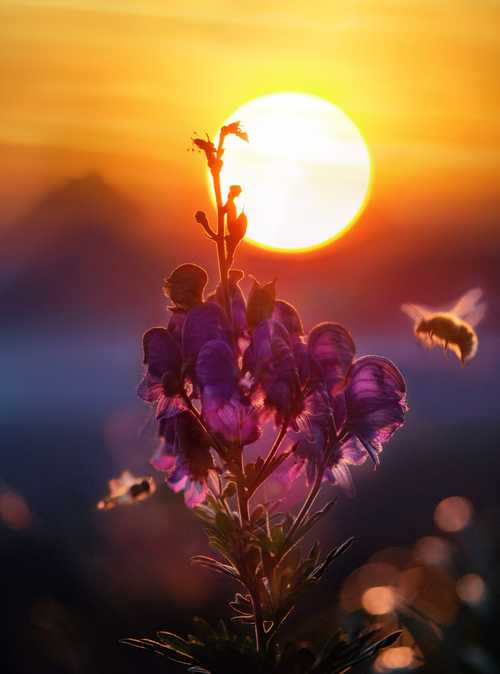
In a world that is experiencing human-driven habitat loss, a changing climate, and air, water, and soil pollution, the current insect apocalypse is tragically unsurprising. Along with other pollinating insects – wasps, beetles, flies, ants, moths, and butterflies – bees are essential not only for biodiversity, but because one in every three bites of food we take is a product of the pollination they carry out.
However, there are things that we can all do to improve pollinators’ odds of survival. Following our earlier article, ‘Why bees are important, and how we can help them’, allow earth.fm to suggest further tips for supporting our Anthophilic friends. Specifically: what plants can be grown to assist bees, and at what times of year?
The plant species listed below are appropriate to the UK, but this may not be the case elsewhere. If you choose to plant any of these selections, please ensure that they are suitable for your location (for example, it is illegal to sell certain plants in certain US states). No matter where you’re located in the world, we’d love to hear about what plants you are growing to support local bee populations, and any tips of species that bees can’t get enough of!
What plants will help bees?
If it is possible for you to grow any of the following plants, you will be contributing to bees’ survival. Bees will feed on their nectar (which contains sugar, providing energy) and pollen, the proteins and oils in which will ensure a balanced diet.
Ideally, try to supply a range of species which will flower year-round: some bee species awake from hibernation as early as February; others are still active in November. Plants grown in a garden or in tubs, pots, or window boxes are equally beneficial. If your space is limited, consider focusing on herbs, which appeal to bees due to the intensity of their aromas, as well as having the added bonus of benefitting your cooking.
In addition, the color most visible to bees is purple, so flowers of this color are a particularly strong choice. ‘Single’ flowers which have exposed centers – where the nectar and pollen are located – are more accessible to bees than double flowers (which have petals within petals) such as the majority of ornamental garden roses. On the other hand, tubular flowers like honeysuckle or foxgloves are vital sources of food to long-tongued bees. And if you’re planting vegetables, don’t forget to allow some individuals to flower, so that bees and pollinators can benefit from them.
The following are plants which are popular with bees, but options will vary from country to country and region to region. Although some plants provide greater quantities of pollen and nectar, or refill more quickly, almost any flowering plant is better than a lack of flowering plants.
Spring-flowering plants for bees
Flowers:
- Lungwort: the striking blue flowers of this low maintenance perennial attract the hairy-footed flower bee.
- Crocus: not only are these flowers rich in nectar, but they close at night – as a result, queen bumblebees sometimes sleep inside them: a perfectly fairytale move.
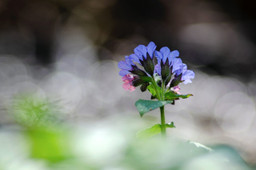
Vegetables:
- Kale (and other brassicas): by allowing some plants to ‘bolt’, their fragrant yellow flowers will attract various species of bees, since such a profusion of flowers allows for economical foraging.
- Broad beans: another early-flowering species (continuing into the summer) which your local bees will appreciate.
Trees and shrubs:
- Apple (and/or crab apple): originally domesticated in Central Asia, the apple tree’s blossom is a favorite of the red mason bee.
- Goat willow (or pussy willow, because the male catkins look like cats’ paws): the pollen and nectar of this small tree is an important foodstuff for Clark’s miner bee and the chocolate mining bee.
Herbs:
- Borage: an excellent choice not only because its flowering season extends from spring into early autumn. Its leaves and blue flowers are also edible, and ideal for short-tongued bees like the buff-tailed bumblebee.
- Wild marjoram: a relative of oregano, its nectar-rich pink-white flowers are a staple for various bee species including leafcutter and furrow bees.
Wildflowers:
- Comfrey: though it has the potential to become unruly, its flowers are quick to refill with nectar, bringing benefits to its bee customers. Humans can make an eco-friendly, potassium-rich liquid fertilizer from it.
- Cowslip: also known as ‘keys of heaven’ due to their resemblance to a set of keys, and said to grow where St Peter dropped the Key of Earth. Back on Earth, they are useful as a food source for long-tongued bees.
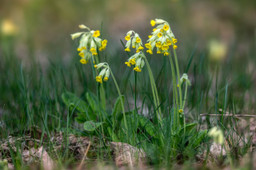
Summer-flowering plants for bees
Flowers:
- Echinops (AKA globe thistle): with their striking spherical heads composed of small blue or white flowers, echinops are like catnip to bees (and butterflies).
- Monarda (AKA bergamot or bee balm): with long-lasting flowers and scented foliage, bergamots may be as enjoyable for us as for the bee species which feed from them: wool carders, common carders, and garden bumblebees.
Vegetables:
- Tree spinach: with its “almost glittery, brilliant pink baby leaves” and 3m height, tree spinach not only looks striking, but its flower spike of small red flowers are an excellent source of food for bees and other beneficial insects.
- Fennel: with bright yellow, nectar- and pollen-rich flowers (as anise-flavored as its edible bulbs), this member of the carrot family feeds bee species including yellow-faced bees, bumblebees, and honeybees.
Trees and shrubs:
- Hawthorn: dense and, as you might imagine, thorny, its frothy white or pink blossom is a significant food source for solitary bee species including the tawny mining bee and the hawthorn mining bee, while locals birds will be grateful for the tree’s haws (its berry-like fruit).
- Lavender: given its famous attractiveness to bees (and other pollinators), you can’t go wrong with this aromatic genus of the mint family, while its flowers, which can range from blue, violet, and lilac to blackish purple or even yellow, are similarly easy on the eye.

Herbs:
- Mint: of the many species in this genus, the dense clusters of pink-to-lilac water mint (Mentha aquatica) flowers appeal particularly to bees and hoverflies.
- Chives: a close relative of common onions, garlic, shallots, and leeks, chives can be grown in pots and window boxes. Sulfur compounds generally repulse other insects, yet their flowers remain attractive to bees.
Wildflowers:
- Viper’s bugloss: tall blue flower spikes with a high pollen and nectar content mean that this member of the borage family is considered “one of the best honey bee plants in the world”, with May-to-September flowering “provid[ing] plentiful nectar for much-needed winter stores”.
- Woodland forget-me-not: such hairy perennial can look unassuming before it flowers, but delicate, pale blue flowers are as attractive to us as their nectar is to solitary bees such as small furrow bees.

Autumn-flowering plants for bees
Flowers:
- Japanese anemones: a genus of the buttercup family, these long-stemmed perennials can create a profusion of color into the autumn, giving food for pollinators like bumblebees which remain active late in the year.
- Sedum (AKA stonecrops): containing almost 500 species, this genus of leaf succulents (which are therefore drought-tolerant) are easy to grow, provide excellent cover for green roofs, and are a boon to bees and butterflies.
Trees and shrubs:
- Honeysuckle: primarily climbers (though shrubby varieties also exist), its long tubular flowers not only attract bees during the days, but moths at night.
- Abelia: these scented and highly floriferous ‘bee bushes’ are well named and will doubtless attract both bumble- and honeybees.
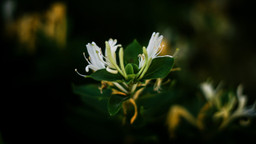
Herbs:
- Sage: despite the long history of common sage being used both medicinally and in cooking, many cultivars are also popular ornamental plants. Crested sage (Salvia viridis) flowers into autumn, helping to contribute a stable food source to bumblebees and leafcutter bees.
- Hyssop: another late-flowering herb, with blue or sometimes white flowers, hyssop has been traditionally used in apiculture for the production of aromatic honey, so its appeal to bees is beyond question.
Wildflowers:
- Common toadflax: distinctive closed flowers (somewhat akin to snapdragons), which persist into November, can only be pollinated by strong insects like bumblebees. Colloquial names are largely adorable (butter and eggs [due to the flowers’ yellow and orange coloring], bunny mouths, calf’s snout), but can also be improbable (“impudent lawyer”?) and even sinister (dead men’s bones, dragon bushes, devil’s flax).
- Yarrow: a herbaceous perennial with white or pink inflorescences (clusters of flowers on a branch; ornamental cultivars exist in many colors) into autumn, a sweet scent, and ferny leaves, yarrow is a food source to many insects as well as bees, and is even used by certain birds to line their nests, possibly due to parasite-repellent properties.
Autumn-flowering plants for bees
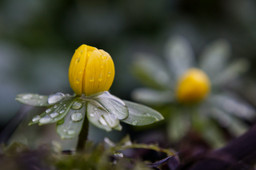
Flowers:
- Snowdrops: these white, bell-shaped flowers emerge so early that they do not rely on insects for pollination, spreading instead by the process of bulb division. Nevertheless, they may form a welcome source of sustenance to winter-active bees and other insects.
- Winter aconite: the cheery yellow cup-shaped flowers of this 15cm-high species of the buttercup family will supply both welcome color in the late winter and early spring, as well as pollen for bumblebees, honeybees and spring mining bees.
Trees and shrubs:
- Flowering quince (Chaenomeles): these ornamental, spiny shrubs produce their orange-red, white, or pink five-petal flowers in late winter and early spring, making them a lifeline for bees at this time of year, allowing them to build up their brood.
- Ivy: these woody climbers or ground-creepers should be allowed to flower and fruit; the former is an invaluable late source of nectar for bees, while the latter is vital for birds during the winter. Ivy’s dense foliage is also significant for providing shelter in which birds and small mammals can nest.
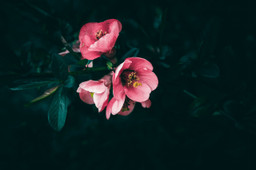
Herbs:
- Rosemary: recently recategorized as a member of the sage family, the needles of this hardy plant are not only excellent for cooking with, but its late (blue, mauve, pink, or white) flowers which attract a variety of bee species.
Wildflowers:
- Lesser celandine: another member of the buttercup family, with similarly glossy yellow flowers, this early opening wildflower is generously loaded with pollen, attracting queen bumblebees and mining species such as the tawny mining bee. They close their petals in dull weather or before rain – but, as Wordsworth wrote, “The first moment that the sun may shine, / Bright as the sun himself, ’tis out again!”
- Speedwell: delicate blue flowers are frequented by small mining bees such as the red-girdled mining bee.
As biologist Dave Goulson points out, “If people spent a little more time on their hands and knees, just looking at these things, they’d find they’re not so revolting after all. Also, we shouldn’t always look at insects from the perspective of what they do for us. They have as much a right to be here as we do.”
While other arthropods which people are less inclined to be disposed to (spiders, wasps, earwigs) shouldn’t be overlooked in favor of bees, any amount of bee-friendly plants which you can grow will be helping these embattled species (not to mention other pollinators) to cling on. Even if you aren’t green-fingered, there are plenty of low-maintenance plants which will provide a lifeline for bees with barely any upkeep!
Earth.fm soundscapes you may enjoy:
- Bee Sounds – Inside a Beehive
- Bluethroat and Bumblebees
- Spring in the Himalayan Foothills
- Meadow Atmosphere
Featured photo by Simon Berger on Unsplash
Earth.fm is a completely free streaming service of 1000+ nature sounds from around the world, offering natural soundscapes and guided meditations for people who wish to listen to nature, relax, and become more connected. Launched in 2022, Earth.fm is a non-profit and a 1% for the Planet Environmental Partner.
Check out our recordings of nature ambience from sound recordists and artists spanning the globe, our thematic playlists of immersive soundscapes and our Wind Is the Original Radio podcast.
You can join the Earth.fm family by signing up for our newsletter of weekly inspiration for your precious ears, or become a member to enjoy the extra Earth.fm features and goodies and support us on our mission.
Subscription fees contribute to growing our library of authentic nature sounds, research into topics like noise pollution and the connection between nature and mental wellbeing, as well as funding grants that support emerging nature sound recordists from underprivileged communities.

